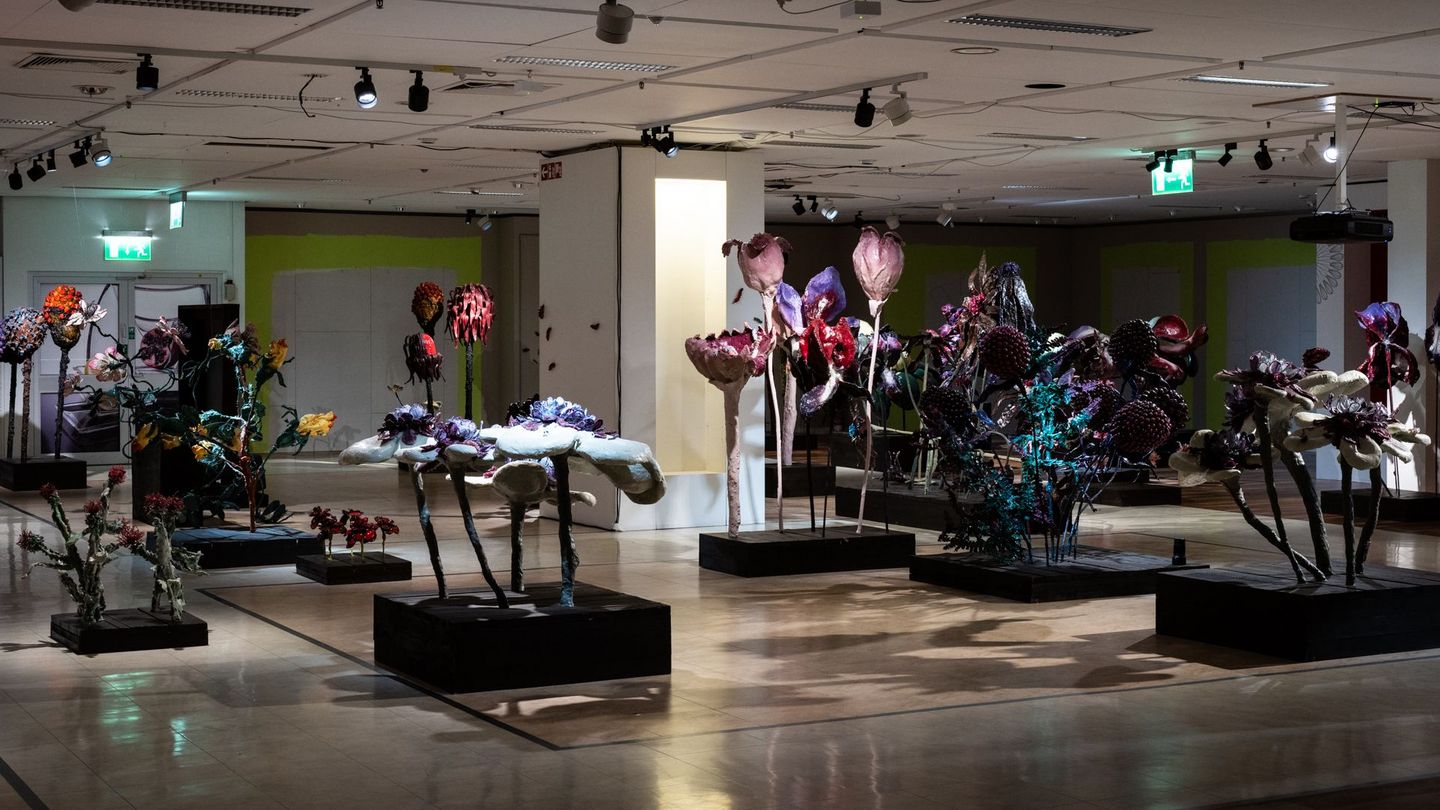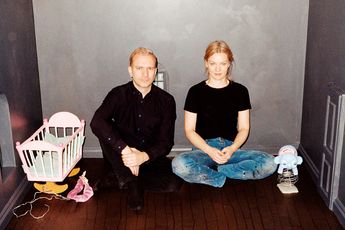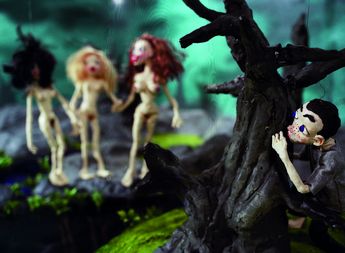In their films and installations, Nathalie Djurberg and Hans Berg take us into a magical world with mysterious creatures, wild animals and exotic plants. But the miraculous mythical creatures play a scary game. Evil lurks everywhere and there is no escape for the protagonists of her stories, who cluelessly fall in into every trap.
Born in Lysekil 1978, the Swedish artist Nathalie Djurberg became famous with her stop-motion films in which she brought plasticine and cloth puppets in surreal, humorous but also scary stories to life. Djurberg makes all her work on her own, from creating the figures and the settings to post-production. The music is composed by her artistic partner Hans Berg. Similar to the silent films of the early 20th century, the music is an important design element that drives the plot and accompanies the characters on their way.
The multimedia installation The Experiment, for which Djurberg was awarded with the Silver Lion for the most promising young artist at the 2009 Venice Biennale, consists of a surreal garden with 139 larger-than-life plants, which the artist formed out of various plastics, cardboard and wire. The viewer feels like Alice in Wonderland as he wanders past wide-open, wet shiny calyx and a thicket of vines, which stretch their sticky leaves at him.
With Greed, Forest and Cave, in the midst of this miraculous plant world, three videos are presented that arouse ambivalent feelings of fascination and disgust, curiosity and revulsion. Because the protagonists in the films are dolls and not actual people, they allow an unsparing depiction of socially repressed issues, such as child abuse, sadism, bestiality and excessive violence.
Nathalie Djurberg’s & Hans Berg's movies are disturbing because they are formally based on childish clay figures, but address deep-seated trauma and mental deformities. What kind of person might write such a harsh, unbearable stories on the naked bodies of these cute creatures from the seemingly safe world of children? "It is a way to access these concerns," explains Djurberg her motivation: “One explores how far one can go, how far it relates to or upsets oneself. I was surprised when I first noticed that, with one of my animations, I could actually sympathize with the impatience of the killer and rapist, surprised that I was indignant that the female victim gives me trouble, thereby making everything much worse for herself. I have to play all the roles myself, both the perpetrator and the victim. The clash between these two has always aroused my interest."


